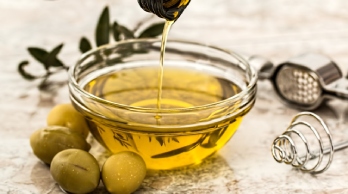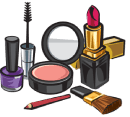Beauty is a universal language, yet it is expressed in remarkably diverse ways across cultures. From ancient skincare secrets to bold makeup traditions, beauty is deeply rooted in history, tradition, and personal identity. While modern beauty trends are often influenced by globalization and social media, many timeless rituals continue to shape contemporary skincare and cosmetics.
In this blog, we’ll take a journey across continents to explore fascinating beauty traditions—from Asia’s porcelain-skin obsession to the nourishing oils of the Middle East and the earth-based rituals of Indigenous communities. These cultural practices not only highlight unique standards of beauty but also offer valuable lessons in self-care and wellness.
The Pursuit of Porcelain Skin in Asia
In many Asian cultures, particularly in China, Japan, and Korea, flawless, radiant skin is considered a hallmark of beauty. Traditional Chinese beauty practices include using rice water to cleanse and brighten the skin, while jade rollers help improve circulation and reduce puffiness. Japanese beauty rituals incorporate matcha, camellia oil, and fermented skincare products, emphasizing natural ingredients. Meanwhile, Korean skincare has gained global popularity with its multi-step routines, including sheet masks, essences, and snail mucin for hydration and anti-ageing.
What We Can Learn:Gentle, natural skincare ingredients can enhance skin health over time.
Consistency in skincare (like multi-step routines) can lead to long-term benefits.

African Beauty: The Power of Natural Ingredients
Africa is home to a vast array of beauty traditions, many of which utilize natural ingredients passed down through generations. Shea butter, a staple in West African skincare, is prized for its deep hydration and healing properties. North African beauty rituals often include ghassoul clay for detoxifying the skin and henna for decorative body art, particularly during weddings and festive celebrations. The use of kohl for defining the eyes dates back centuries, both for aesthetics and sun protection.
What We Can Learn:Natural ingredients, like clay and plant-based oils, can be powerful skincare tools.
Beauty rituals can also be symbolic and deeply tied to cultural identity.

Middle Eastern Beauty: Timeless Elegance and Luxurious Oils
Middle Eastern beauty is synonymous with rich traditions, luxurious oils, and mesmerizing eye makeup. Kohl eyeliner, traditionally made from ground minerals, enhances the eyes while offering protection from harsh sunlight. Argan oil, native to Morocco, is a cherished beauty elixir known for nourishing the skin and hair. Another key tradition is the hammam, a steam bath ritual practiced in countries like Turkey and Egypt, which deeply cleanses the body and rejuvenates the skin.
What We Can Learn:Oils like argan and rosehip can be natural, effective moisturizers.
Rituals like steam baths can detoxify and refresh the skin.
European Beauty: A Fusion of Tradition and Innovation
European beauty rituals blend historical traditions with modern advancements. In France, skincare takes a minimalist approach, focusing on pharmacy-grade products enriched with thermal water and botanical extracts. Italian beauty traditions embrace olive oil for its nourishing and anti-aging properties, while Scandinavian beauty relies on nature-driven remedies such as seaweed masks and cold-water therapy. These time-honored practices continue to influence the global beauty industry.
What We Can Learn:A “less is more” approach can still be effective for skincare.
Nature-based remedies, such as cold therapy and seaweed, can boost skin health.
Latin American Beauty: Vibrant Colors and Indigenous Secrets
A mix of indigenous knowledge and bold, colorful aesthetics characterizes Latin American beauty. Ancient Mayan and Aztec beauty rituals included using avocado, honey, and cocoa to nourish the skin. Brightly colored makeup, especially bold lips and dramatic eyeliner, remains a defining feature of beauty in countries like Brazil, Mexico, and Colombia. Hair care also plays a significant role, with natural ingredients like aloe vera and castor oil being widely used for hair strengthening and growth.
What We Can Learn:Natural remedies like aloe vera can nourish hair and skin.
Bold makeup looks can be a statement of confidence and cultural pride.
South Asian Beauty: Ayurveda and Holistic Traditions
South Asian beauty is deeply rooted in Ayurveda, an ancient system of natural healing. In India, turmeric is a key ingredient in skincare for its brightening and anti-inflammatory properties. Hair oiling, a longstanding tradition, involves massaging coconut or amla oil into the scalp for deep nourishment and shine. Kajal, a traditional eyeliner, is used not only for cosmetic purposes but also for its cooling and protective benefits against dust and the sun.
What We Can Learn:Ayurvedic skincare focuses on balance and long-term wellness.
Oiling hair regularly can improve hair health and prevent damage.
Indigenous Beauty: Sacred Rituals and Earth-Based Ingredients
Indigenous beauty traditions emphasize harmony with nature, incorporating earth-derived ingredients into skincare and haircare. Native American beauty rituals involve the use of clay masks, plant-based oils, and herbal infusions to maintain skin health. The Maori of New Zealand uses harakeke (flax) for its hydrating properties, while Aboriginal Australians utilize emu oil for its antioxidant and healing benefits. These practices are deeply connected to cultural heritage and the natural environment.
What We Can Learn:Respecting and utilizing natural resources can lead to sustainable beauty practices.
Beauty is not just about appearance—it’s also about ritual, healing, and self-care.
The Global Influence of Beauty Trends

With social media and international beauty brands expanding their reach, traditional beauty rituals from different cultures are influencing modern trends more than ever. Korean beauty (K-beauty) has become a global sensation, inspiring multi-step skincare routines. Middle Eastern contouring techniques, made famous by makeup artists and influencers, have revolutionized the cosmetics industry. Meanwhile, indigenous and sustainable beauty practices are gaining popularity as consumers seek ethical and eco-friendly alternatives.
Conclusion
Beauty is a diverse and ever-evolving concept shaped by cultural traditions, natural elements, and personal expression. Every culture contributes to the global beauty landscape with its unique rituals and practices. By appreciating and adopting these traditions, we celebrate the rich history of beauty across the world. Whether through ancient remedies or modern innovations, beauty remains a timeless art form that connects people across cultures.